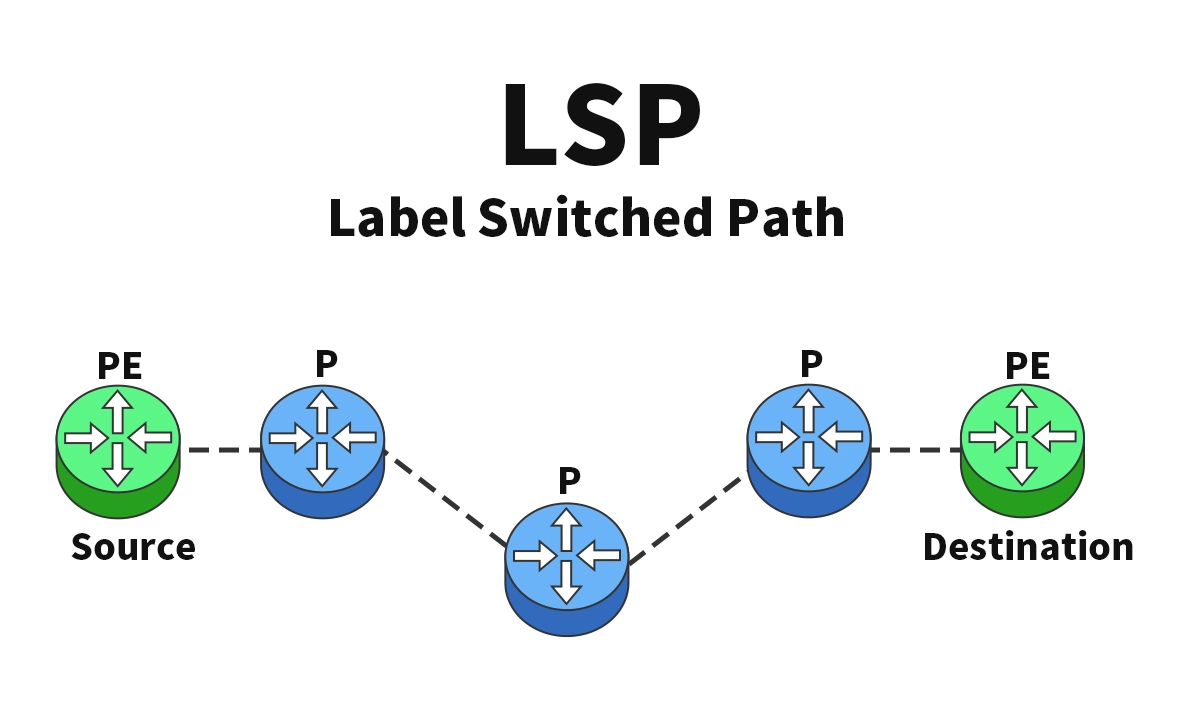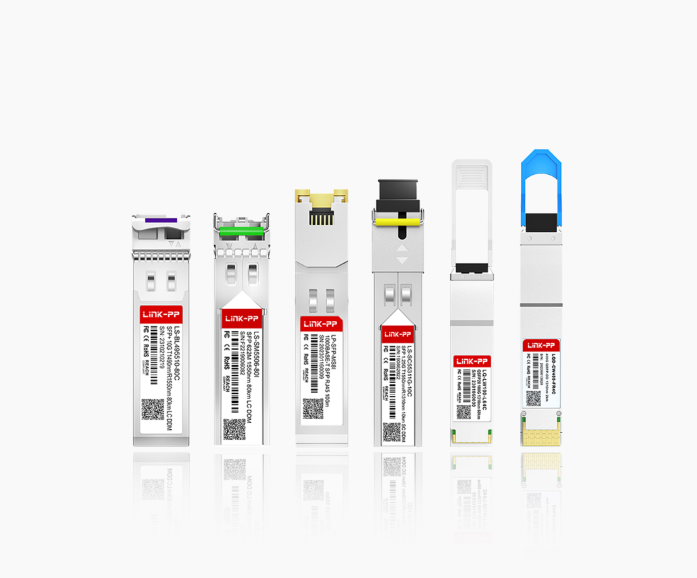
In modern IP and optical communication networks, Label Switched Paths (LSPs) form the logical backbone of MPLS (Multiprotocol Label Switching) architecture. They define the paths data packets take through routers and switches, ensuring predictable performance, low latency, and optimized bandwidth utilization.
➡️ What is LSP?
A Label Switched Path (LSP) is a predetermined sequence of routers through which an MPLS packet travels. Each router in this path—called a Label Switch Router (LSR)—forwards packets based on short, fixed-length labels instead of complex IP lookups.
When a packet enters an MPLS network, the ingress router assigns a label identifying its destination and service class. As the packet traverses the network, intermediate LSRs use this label to switch the packet quickly to the correct outgoing interface. Finally, the egress router removes the label before forwarding the packet to its final destination.
This label-based forwarding mechanism enables fast packet delivery, predictable traffic behavior, and fine-grained QoS control—key advantages over traditional IP routing.
➡️ How LSPs Work: Step-by-Step
Ingress Labeling – The ingress Label Edge Router (LER) classifies the incoming IP packet and attaches an MPLS label that defines its LSP.
Label Switching – Each intermediate LSR examines the label, swaps it for a new one according to its forwarding table, and sends the packet to the next hop.
Egress Decapsulation – The egress LER removes the label and forwards the IP packet to its next destination.
The path may be created dynamically via routing protocols such as LDP (Label Distribution Protocol) or explicitly defined for Traffic Engineering (TE) using RSVP-TE (Resource Reservation Protocol–Traffic Engineering).

➡️ Applications of LSPs in Modern Networks
1. MPLS Traffic Engineering (TE)
LSPs enable operators to control traffic flow and allocate bandwidth intelligently. They allow networks to route traffic along paths that avoid congestion, balancing utilization across multiple links.
2. VPN Services (L3VPN / L2VPN)
MPLS VPNs use LSPs to isolate and secure traffic between customer sites. Each VPN has its own LSPs, ensuring guaranteed performance and privacy.
3. Quality of Service (QoS)
By associating specific labels with service classes, providers can prioritize latency-sensitive applications such as VoIP, video conferencing, or industrial IoT traffic.
4. Fast Reroute (FRR)
Pre-established backup LSPs ensure sub-50ms recovery times in the event of a link or node failure—critical for carrier-grade reliability.
➡️ Advantages of LSP-Based Networks
Advantage | Description |
|---|---|
Deterministic Routing | LSPs follow defined routes, improving predictability and performance. |
Scalability | Label-based forwarding simplifies routing tables, enabling large-scale networks. |
QoS Control | Supports differentiated services by assigning specific labels for traffic classes. |
Rapid Failover | Backup LSPs enable quick recovery and uninterrupted data flow. |
Interoperability | LSPs are compatible with IP, Ethernet, and optical layer technologies. |
➡️ LSPs and the Physical Layer: The LINK-PP Connection
Although LSPs operate at the logical layer, their performance depends on the reliability and integrity of the underlying physical connections.
LINK-PP’s high-performance optical transceivers and integrated RJ45 connectors provide the stable physical foundation for MPLS-based Label Switched Paths (LSPs), ensuring low latency and high reliability across data center and telecom networks.
For example:
LINK-PP SFP Optical Transceivers deliver consistent transmission performance across single-mode and multimode fiber networks, supporting the high throughput required by MPLS routers.
LINK-PP Magnetics RJ45 Connectors ensure robust Ethernet connectivity, providing EMI suppression and signal isolation that maintain the stability of LSP-based packet forwarding.
These components are crucial in core routers, aggregation switches, and edge devices that establish and maintain LSPs for high-speed service delivery.
➡️ Future Trends: LSPs in SDN and Segment Routing
The evolution of MPLS networks now integrates with Software-Defined Networking (SDN) and Segment Routing (SR).
Segment Routing (SR-MPLS) replaces complex label distribution protocols with source-based routing, where a single label stack defines the complete forwarding path.
SDN-based orchestration allows centralized control over LSP setup, teardown, and optimization, enabling fully automated traffic management.
LINK-PP’s fiber-optic and Ethernet interconnect products are designed to meet the growing bandwidth and latency demands of these next-generation network paradigms.
➡️ Conclusion
Label Switched Paths (LSPs) are at the heart of modern MPLS networks—enabling reliable, scalable, and predictable data transport for carriers and data centers worldwide. Their efficiency, combined with robust physical-layer components like LINK-PP’s SFP Modules and RJ45 Magjacks, ensures high network performance and service continuity.
By bridging logical routing intelligence with stable physical infrastructure, LINK-PP helps global network operators build the resilient, high-speed systems required for the future of digital communication.




